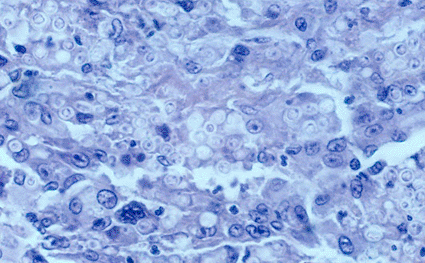Cytology Predicts Infections in Pulmonary Lesions
By LabMedica International staff writers
Posted on 11 Nov 2010
The examination of pulmonary fine-needle aspiration biopsy specimens by a cytopathologist aids in identifying the infectious organisms in pulmonary lesions. Posted on 11 Nov 2010
Fine-needle aspiration biopsy (FNAB) of the lung is an invasive procedure commonly used to evaluate localized lesions, and can be used in determining the diagnosis of infectious causes before bacterial cultures yield results.

Image: Light micrograph of a section through a nodule containing the fungus Histoplasma duboisii (Photo courtesy of CNRI / Science Photo Library).
In a retrospective study carried out at the University of California, San Francisco (UCSF; San Francisco, CA, USA), scientists reviewed 820 FNABs that were performed on patients with pulmonary nodules over a 10-year study period. All samples were sent for cytopathologic evaluation and 80 (10%) FNABs were also sent for microbiologic culture. There were 24 samples with positive culture results (30%) comprising 28 organisms with two samples yielding two organisms and one with three organisms isolated. Eighteen isolates were bacterial, five were fungal, and five were mycobacterial. Seventeen samples (21%) yielded organisms considered potentially clinically significant, whereas seven (9%) were likely contaminants.
Cytopathologic findings associated with infectious etiologies (inflammatory cells, necrotic debris, and/or microbial organisms) were seen in all but four culture-positive cases, and three of these yielded contaminant organisms. Using culture as the gold standard and excluding contaminant organisms, sensitivity and specificity of cytology were 94% and 43%, with positive and negative predictive values of 33% and 96%, respectively. Cytology predicted positive cultures in all cases where organisms were visualized, and it was associated with negative cultures in 24 of 25 cases where inflammatory changes and necrosis were absent.
The authors of the study concluded that cytological results are often available more rapidly than cultures, particularly for slowly growing organisms, and may be used to guide treatment decisions before definitive culture diagnosis. The study was published in November 2010 in the journal Diagnostic Microbiology and Infectious Disease.
Related Links:
University of California, San Francisco













